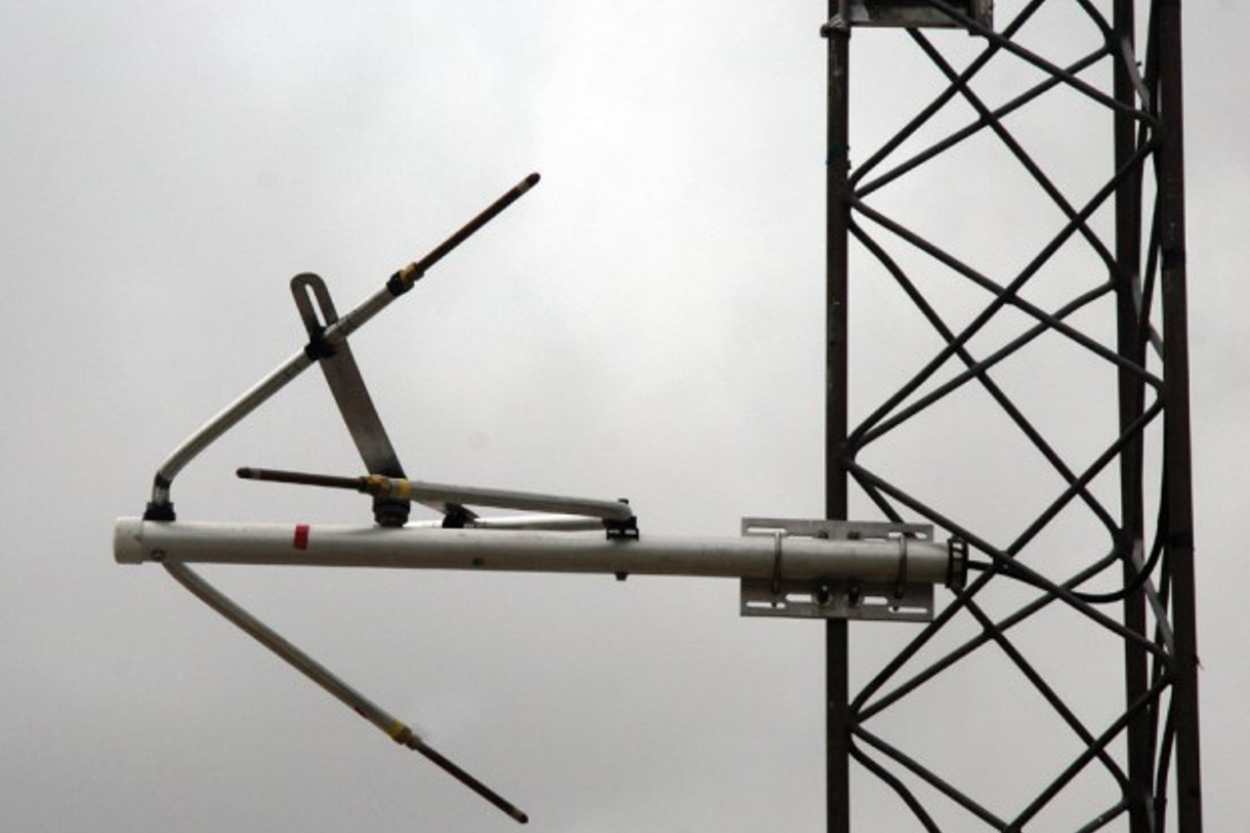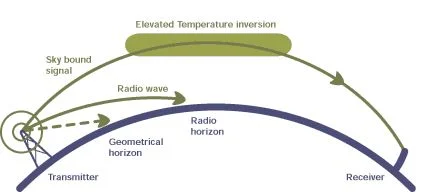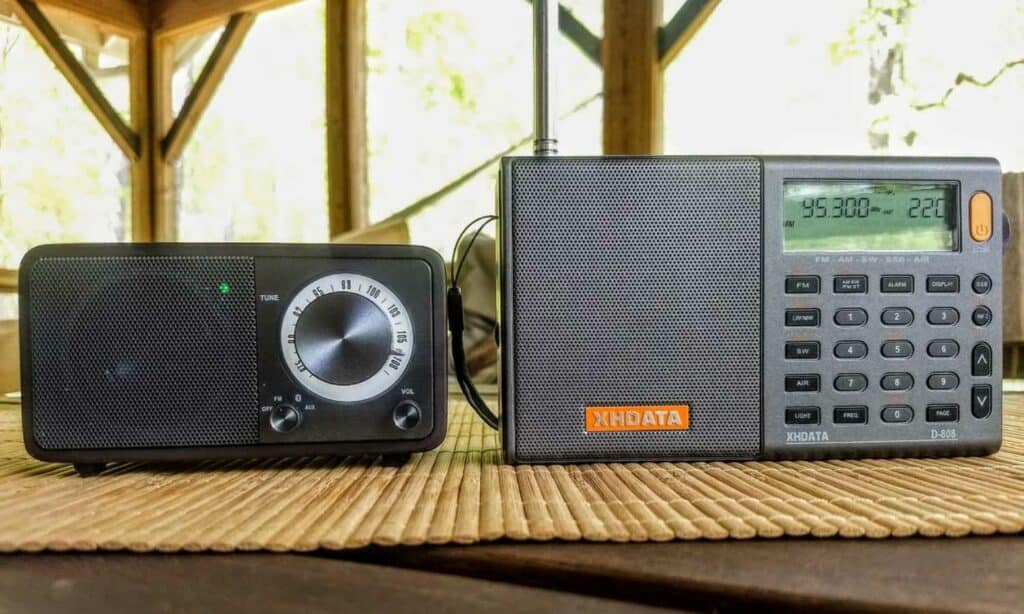Don’t you hate it when you tune in to your favorite station and there’s a bunch of static flooding your audio? Well, you’re not alone; poor reception is a common problem with FM stations. The static that you hear in the background is due to weak FM signals and possible interference.
The good news is, with a little ingenuity, you can greatly improve your FM radio’s reception for a better listening experience. In this article, we’ll be looking at how you can use a single-wire antenna to improve FM signals.
But before we get into all that good stuff, why don’t we demystify FM signals and antennas?
Understanding FM Signals and Antennas

In the early days of radio, the most logical way of transmitting audio was via AM signals (that’s Amplitude Modulation). With this system, the intensity of the radio signal varied over the positive and negative alternations of the sound signal. While the signal was transmitted with the same frequency, the amplitude varied.
Radio stations could transmit music and voices without sounding like a recorded telephone call. But AM signals had one weakness; lightning. Lightning distorted the sound severely.
It was from this challenge that a new modulation arose, and the Frequency Modulation (FM) was born. With FM, the signal was transmitted with the same amplitude but with varying frequency. When the modulation of an FM signal is positive, the frequency of the carrier wave goes up. And the opposite is true; when the modulation is negative, the frequency of the carrier wave goes down.
Positive or negative, the amplitude of the signal remains constant. Even though lightning may cause changes in amplitude, it does not distort the quality of the audio.
But what role does the antenna play in all this?
Your antenna captures electromagnetic waves and carries them to your radio’s circuitry. It converts the waves to digestible electric signals that your radio can decode to the sweet sound that comes from your speakers and headphones.
FM radios use different types of antennas, including:
- Telescopic Antennas
- Printed Circuit Board (PCB) Antennas
- Ferrite Core Antennas
- Wireless Antennas
- Wire Antennas
Back to our topic of discussion; single-wire antennas. They are a variation of wire antennas. They only use a single element to receive electromagnetic waves; hence the creative name, single-wire antennas.
Single-wire antennas have become popular among radio manufacturers and users because of their simplicity and their ability to dissipate or capture signals in an omnidirectional pattern.
Factors Affecting FM Signal Reception
FM signal quality is never guaranteed. It can grow weaker or get obstructed by buildings and other structures. Below are some common factors that affect FM signal strength and quality.

- Distance From the Transmitter: Unfortunately, the further you are from the transmitter, the weaker the signal. You see, as the signal travels from the transmitter, it encounters noise. The farther it moves, the higher the noise-to-signal ratio.
- Obstruction: Physical obstacles like hills, dense vegetation, buildings, and other structures can come between your antenna and FM signals.
- Atmospheric Conditions: Some weather conditions, like heavy rain, fog, or snow, can cause signal interference, therefore weakening FM signals.
- Interference From Other Electronic Devices: Electronic devices that operate in close proximity to your radio can generate disruptive electromagnetic interference. The biggest offenders of this crime include microwave ovens, wireless routers, and cordless phones.
- Multipath Interference: FM signals can bounce off buildings like echoes. And when that happens, your antenna receives the signals out of phase. So the radio station ends up sounding like a bunch of echoes.
- Antenna Quality and Positioning: The quality and positioning of your antenna can vastly reduce signal interference and improve signal strength
- Receiver Sensitivity and Quality: High-quality FM receivers with decent sensitivity are better at picking up weaker signals. So consider that when shopping for a radio.
- Electrical Noise: Though you may not hear it, some electronic devices emit electrical noise. Fluorescent bulbs and poorly shaded cables do this all the time.
And those are eight factors that work against you every time you tune in to your favorite radio station. But what can you do to overcome these obstacles and probably improve FM signal strengths?
DIY Single Wire Antenna
The single-wire antenna is the simplest antenna you can ever build. All you need is a single strand of wire. It could be insulated or not; both alternatives work well.
Single-wire antennas are great; they are cheap and easy to build. Wires are also easily manipulable, and they will bend to your will. And depending on how long it runs, you can get to those elusive FM signals wherever they hide.
Well, how do you make a single-wire antenna?
What You Need
- A strand of wire, for example, speaker wire or copper wire
- A pair of pliers
Step 1:Strip the End of Your Wires
If your wire is insulated, you’ll want to strip its ends. What we want is for the naked wire to have physical contact with your radio’s antenna ports and the invisible waves e aim to capture.
Step 2: Connect One of the Ends to the Radio’s Reciever
If you have a telescopic antenna, you can coil the naked tip of your wire around your telescopic antenna. If your radio lacks a physical antenna, you might want to turn to the rear side and find the ports labeled “FM EXT” or “ANT EXT.”
Bend one of the naked ends of your wire and twist it to stiffen. Finally, insert the twisted end into the port.
Step 3: Enjoy
Congratulations, you just made a single-wire antenna. Now switch on your radio and enjoy your newly improved signal reception.
Improving FM Signal with the Single Wire Antenna
Just by connecting or attaching your single-wire antenna, you will get a vast improvement in FM signal reception. But why stop there when there are other things you can do to further strengthen FM signals and reduce interference?
Below are some effective single-wire antenna hacks for you:
Increase the length of Your Single-Wire Antenna
Increasing the length of your single-wire antenna vastly improves the quality and strength of the FM signal you get. The rule of thumb is the wire should be at least a quarter of the wavelength of the FM signal you wish to capture.
How about an example? The typical wavelength for FM broadcasting is 8.9 feet, a quarter of that 2.2 feet. So to capture this FM signal, work with wires that are multiples of 2.2 feet. If a 2.2-foot single-wire antenna doesn’t work, try a 4.4-foot wire, then a 6.6-footer, then 8.8 feet, and so forth.
You can lengthen your single-wire antenna by joining it with other wires or constructing a new single-wire antenna with a longer wire.
Adjust Antenna Height
As we’ve mentioned, obstruction is a big impediment to FM signals. One way to access unobstructed signals is by elevating and positioning your single-wire antenna.
Antenna Orientation and Positioning
Elevating your single-wire antenna may be great for working around FM signal obstruction, but when that is not effective, you should consider other options. Sometimes adjusting your single-wire antenna along the horizontal plane can work wonders for you.
Grounding
Wires are made of metal, and they, too, can accumulate electrostatic charges. These charges do add to the electrical interference or noise you’re trying to minimize. With proper grounding, you can greatly improve the antenna’s performance.
Grounding your antenna could be as simple as tethering it to a rod that runs into the ground. Just ensure the metallic part of the wire has physical contact with the metal rod.
Install a Balun
Many consumer FM radios come with an unbalanced input. An effective way to solve this problem is the installation of a balun. This is a device that harmonizes balanced and unbalanced lines.
Find a Thicker Wire for Your Single-Wire Antenna
The thickness or gauge of your wire plays a major role in the performance of your single-wire antenna. You want a thicker wire for this project because they have lower resistance than thinner alternatives. Low resistance equals better signal reception.
Enhancing FM Signal Reception Further
If you’re not satisfied with the performance of your single-wire antenna at this point, don’t trip, we have more hacks for you. Keep in mind these are advanced-level hacks, so try the six tips listed above before attempting these tricks.
Here’s how to further enhance your FM signal reception:
- Get yourself an antenna amplifier or preamplifier to boost weak signals
- Place a metallic reflector behind your single-wire antenna
- Get an antenna tuner (or antenna coupler)
- Try using multiple single-wire antennas
- Use low-loss transmission lines (like coaxial cables) to transmit the signal from the antenna to the receiver
- Optimize your radio’s receiver
- Minimize electrical noise around the receiver and the single-wire antenna
- If your single wire antenna is installed outdoors, ensure it is weatherproofed
Conclusion
A single-wire antenna can greatly improve your FM radio’s reception. And what makes the single-wire antenna an excellent proposition is the fact that it’s cheap and easy to make. But if you’re going to take on this project, ensure that you use a wire with a sizeable thickness and length. Other than that, knock yourself out!

